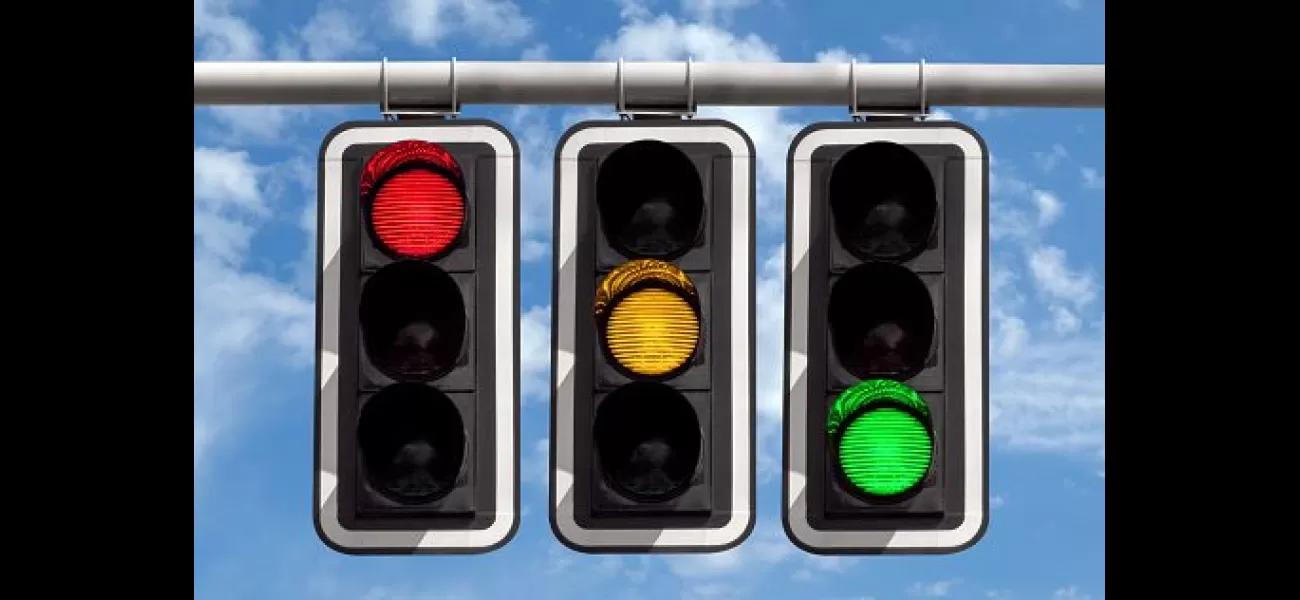Possible paraphrase: New color may be introduced to traffic signals.
It's a big shift.
June 21st 2024.

It's hard to imagine a world without traffic lights. For over a century, these three-colored signals have been guiding drivers all over the world. However, with the rise of autonomous vehicles, there may be a need for a fourth color to be added. This idea has been proposed by scientists in hopes of improving traffic flow around driverless cars.
Although the concept of self-driving vehicles is still relatively new, it is gaining popularity with companies like Waymo and Tesla making significant strides. In fact, some states in the US have already allowed self-driving cars on their roads, while the UK is expected to follow suit in 2026 under the Automated Vehicles Act. This means that soon, there will be a mix of human-driven cars and driverless vehicles sharing the streets.
To ensure a smooth transition, engineers from North Carolina State University have come up with a solution - a 'white light' at traffic lights. This new signal would allow autonomous cars to communicate with each other and coordinate their movements to improve traffic flow. Meanwhile, human drivers would simply need to follow the car in front of them, making the merger of human-driven and self-driving vehicles less chaotic.
Dr. Ali Hajbabaie, the lead researcher, explains that the white light would serve as a guide for human drivers, in addition to the traditional red and green lights. He also mentions that this system would only be activated when there are enough autonomous vehicles on the road, ensuring that it does not interfere with conventional traffic flow. The team has conducted computer simulations to visualize how this system would work, and the results show significant improvements in traffic efficiency.
It's worth noting that traffic lights have come a long way since their first appearance over 150 years ago. The first traffic light, a rudimentary version, was installed outside the Houses of Parliament in London back in 1868. It was operated by a police constable who controlled gas lights at night, until a gas line explosion led to its removal. It wasn't until 1914 that the first electric traffic lights were installed in Ohio, and the three-color system we know today was first used in Detroit in 1919.
In the UK, the first three-color manually operated traffic lights appeared in Piccadilly in 1926, and the first automatic traffic lights were installed in Princes Square, Wolverhampton in 1927. Since then, traffic lights have become an essential part of our roads, and the proposed white light system could further improve travel time, fuel efficiency, and safety for all road users.
Dr. Hajbabaie believes that this system could reduce delays at intersections by more than 25%, especially if there is widespread adoption of autonomous vehicles. However, even with a lower percentage of self-driving cars on the road, there would still be significant improvements in traffic flow. With this innovative solution, it seems like the future of traffic lights is about to get even brighter.
Although the concept of self-driving vehicles is still relatively new, it is gaining popularity with companies like Waymo and Tesla making significant strides. In fact, some states in the US have already allowed self-driving cars on their roads, while the UK is expected to follow suit in 2026 under the Automated Vehicles Act. This means that soon, there will be a mix of human-driven cars and driverless vehicles sharing the streets.
To ensure a smooth transition, engineers from North Carolina State University have come up with a solution - a 'white light' at traffic lights. This new signal would allow autonomous cars to communicate with each other and coordinate their movements to improve traffic flow. Meanwhile, human drivers would simply need to follow the car in front of them, making the merger of human-driven and self-driving vehicles less chaotic.
Dr. Ali Hajbabaie, the lead researcher, explains that the white light would serve as a guide for human drivers, in addition to the traditional red and green lights. He also mentions that this system would only be activated when there are enough autonomous vehicles on the road, ensuring that it does not interfere with conventional traffic flow. The team has conducted computer simulations to visualize how this system would work, and the results show significant improvements in traffic efficiency.
It's worth noting that traffic lights have come a long way since their first appearance over 150 years ago. The first traffic light, a rudimentary version, was installed outside the Houses of Parliament in London back in 1868. It was operated by a police constable who controlled gas lights at night, until a gas line explosion led to its removal. It wasn't until 1914 that the first electric traffic lights were installed in Ohio, and the three-color system we know today was first used in Detroit in 1919.
In the UK, the first three-color manually operated traffic lights appeared in Piccadilly in 1926, and the first automatic traffic lights were installed in Princes Square, Wolverhampton in 1927. Since then, traffic lights have become an essential part of our roads, and the proposed white light system could further improve travel time, fuel efficiency, and safety for all road users.
Dr. Hajbabaie believes that this system could reduce delays at intersections by more than 25%, especially if there is widespread adoption of autonomous vehicles. However, even with a lower percentage of self-driving cars on the road, there would still be significant improvements in traffic flow. With this innovative solution, it seems like the future of traffic lights is about to get even brighter.
[This article has been trending online recently and has been generated with AI. Your feed is customized.]
[Generative AI is experimental.]
0
0
Submit Comment





